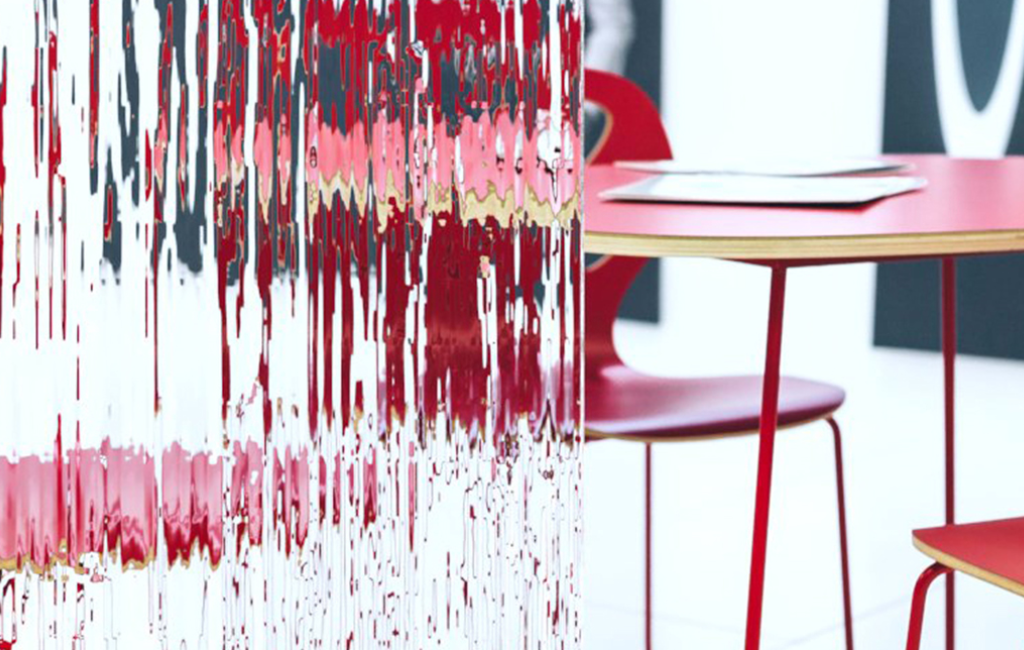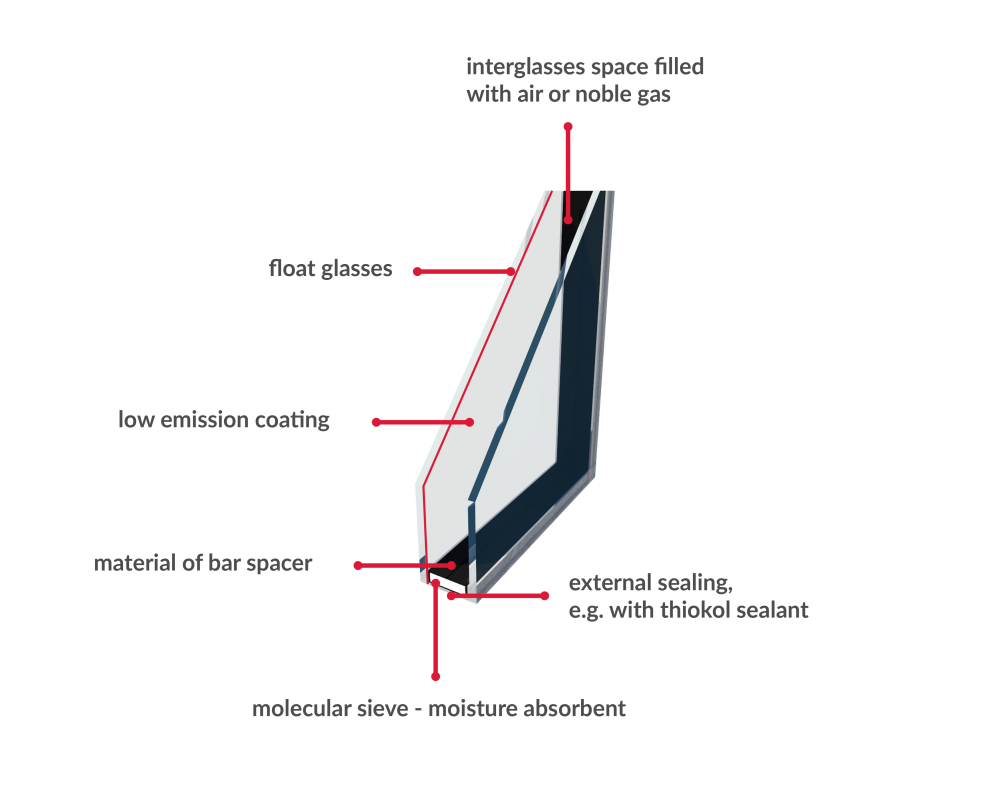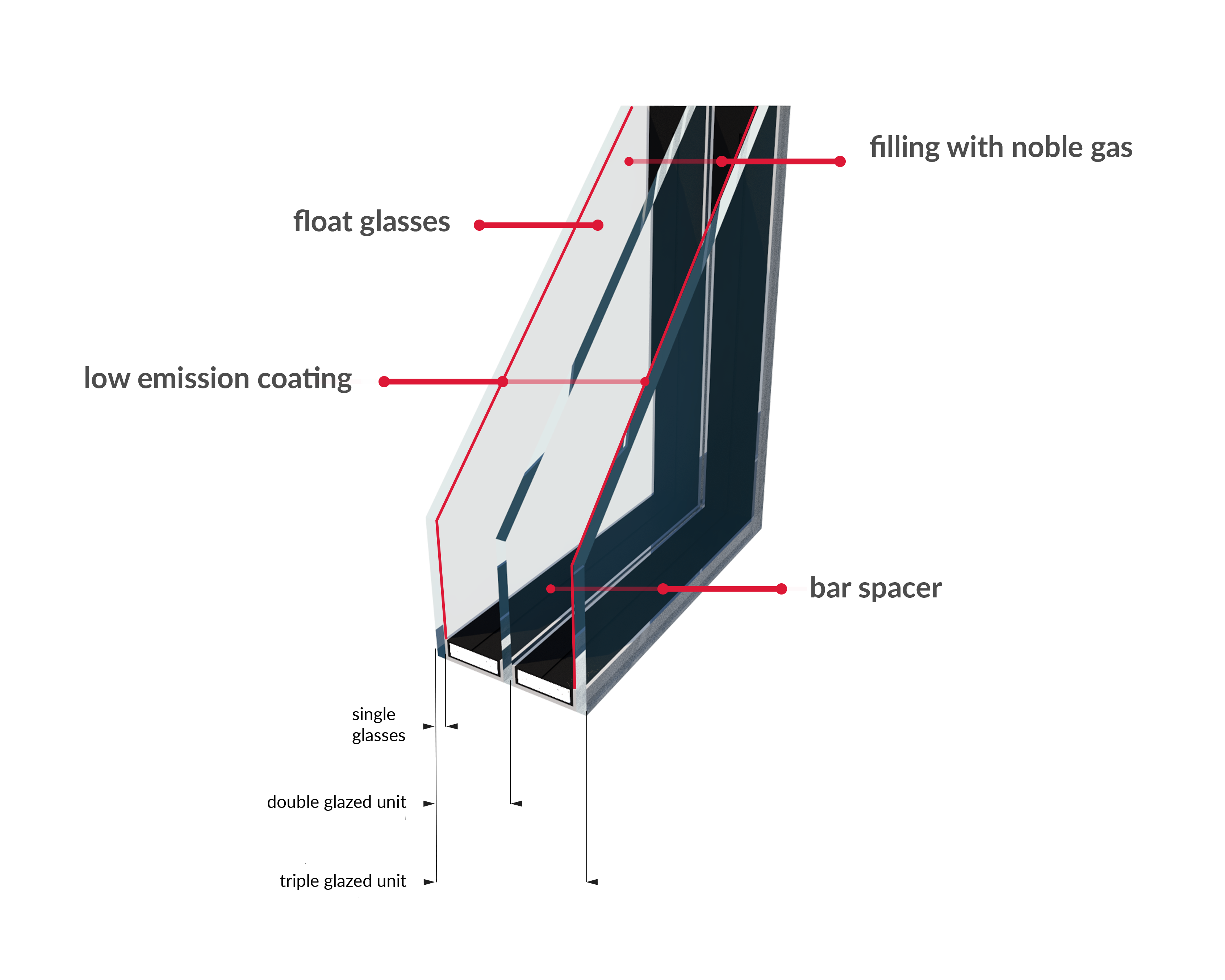Types of Glazed units:
Glazed units
They consist of 2, 3 or 4 glass panes, separated by a bar spacer, and at the same time permanently fixed with each other by means of the sealant. The production process of the glazed unit in Effector is a subject of control at each of several stages, what as a result ensured the highest quality of the finished products. The insulation of the glazed units depends on the used solutions. The best parameters ensure the tri-glass packages, that feature two glass panes with the specialist coatings.
Furthermore, in the modern glazed units the most often is used a so-called bar spacer, which is made of the special plastic featuring the insulation properties. In this manner a so-called thermal bridle is effectively eliminated, which is developed in a place, where, as a standard, a metal, that is well heat conductive spacer combinations both glass panes on the perimeter of the package.
Double glazed units
The double-glazed units usually consist of the external glass pane with a thickness of 10, 12, 15 or 19 mm, the internal space with a width of 16 mm, the internal glass pane with a thickness of 6 mm.
If safety glass VSG is used in the package, it will feature the thermo insulation and safety properties.
Using the glasses dyed in the mass (called otherwise as: antisol) ensures protection against the sunlight. In case of the production of the door combinations, due to the aesthetic reasons, the decorative glasses are frequently used. In practice, you may use successfully nearly each kind of glass in the glazed units.
Triple glazed units
The glasses are one of the most significant elements of the window that are decisive when it comes to a reduction of the heat losses and energy efficiency. Their appropriate arrangement and selection, and filler of the internal space by argon, enables to obtain a high insulating property of glazing, that is to achieve a low heat transfer coefficient of the glass, while remaining its natural colours (Ra=95.7). A standard for the triple glazing, that provides proof of its low energy transmittance is Ug at the level of 0.6 W/m2K.
Usually they comprise the external glass pane with a thickness of 10, 12, 15 or 19 mm, the internal space with a width of 16 mm, the internal glass with a thickness of 6 mm.








